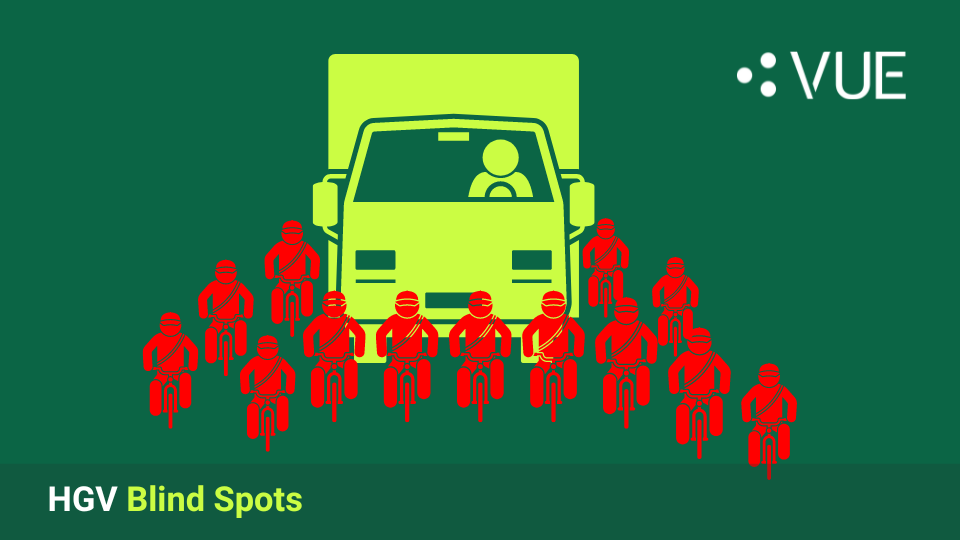
Direct Vision Standard (DVS) Changes:
What do they mean for your fleet?
What is Direct Vision Standard?
Back in 2020, the first phase of Direct Vision Standard came into effect. It meant that all HGVs over 12 tonnes required a permit to enter or operate in the Greater London area, or face a hefty fine.
The initiative was created to significantly improve safety in heavily built-up areas; eliminating blind spots and reducing the risk to pedestrians and cyclists while manoeuvring at low speeds.
According to Transport for London, fatal collisions involving HGVs and vulnerable road users where vision was a contributory factor have halved since 2018; a significant achievement and one which clearly shows the impact technology can have on improving vehicle safety.
As technology continues to improve, so too are the requirements for operating HGVs safely in the Greater London area. The Progressive Safe System (PSS) builds on the requirements of the 2019 Safe System, and the proposed changes have been made public to encourage feedback before the changes are officially confirmed in the Summer of 2023.
Find out more about the current DVS system
So, what are the proposed changes to DVS?
One change that is certain to happen concerns the minimum safety rating for all HGVs over 12 tonnes entering and operating in London. This is set to raise from one star to three stars from 25th October 2024 and vehicles that are rated two stars or lower will need to provide evidence that they meet the requirements set out in the Progressive Safe System.
Although Transport for London is yet to finish its consultations on the changes, five key principles underpin the proposals for the PPS:
- 1) Suggested elements of the system must aim to reduce road danger and improve driver safety
- 2) Components need to be backed up with solid evidence supporting their effectiveness and safety benefits
- 3) Any requirements must be readily available to the market and industry recognised.
- 4) You must be able to retrofit them to existing vehicles.
- 5) Changes should not be cost prohibitive
The new system will also be taking into account developments in technology which would need to be accompanied by detailed performance specifications to ensure equipment is of high quality.
TFL is also proposing to make many of the recommendations in the current Safe System mandatory and provide clearer performance specifications along with introducing requirements aimed at improving detection at the front of a vehicle. Many of these proposals in the new Progressive Safe System are centred around improving visibility for drivers, eliminating blind spots and ultimately reducing the risk of close proximity collisions.
HGVs accounted for 3% of traffic in London between 2019-2021 yet were involved in 11% of fatal accidents involving pedestrians and over half of those involving cyclists so it’s no surprise that the safety of more vulnerable road users are being prioritised in this way.
TFL are proposing to do this by firstly updating its current guidance regarding mirrors to include Camera Monitoring Systems (CMS) which can be used instead of or in combination with Class V and VI mirrors. These CMS must also completely eliminate any blind spots at the nearside of the vehicle rather than the current guidance to “aim” to do so, and mirrors must meet the requirements set out in number 46 of the UNECE Regulations.

Changes to the rules regarding sensors could also be changed. The current guidance states that rigid vehicles should have full coverage down the nearside of a vehicle and should not activate when near fixtures in the road or stationary vehicles however the new Progressive Safe System could seek to make these mandatory and cover a range of two metres. The proposal would also require sensors on articulated vehicles to have full coverage of both the tractor unit and the semi-trailer, and fleets must ensure they are suitably positioned with a coverage range of two meters of lateral coverage.
Moving Off Information Systems are also expected to see changes to ensure a driver is alerted to any vulnerable road user when the vehicle begins its journey or moves off after pulling over at the side of the road. Today’s guidance simply recommends the addition of front sensors to a vehicle, however akin to much of the other elements of the Safe System, this could become a requirement. In addition to this, front sensor systems would need to provide an additional signal when a collision becomes extremely close to occurring as well as being an accurate piece of hardware, providing no false alarms.
With the majority of people under five feet five inches being unable to be seen by the driver when they are two metres from the front of a vehicle, it’s understandable why Transport for London also wants to introduce measures that ensure pedestrians and cyclists are aware of the manoeuvres an HGV driver intends to make
Existing guidance states that audible vehicle manoeuvring warnings should be fitted in left-hand drive vehicles however, this is expected to be mandated for all vehicles if the proposals in the PSS are confirmed.

What is VUE's approach to the changes?
As industry experts in helping fleets become DVS compliant, we want to reassure operators they are in safe hands throughout the change to the new system. Whether you need guidance on how to deal with the transition or you’d like your vehicles fitted with our DVS-approved kit; we want to support fleet managers as much as possible during this period.
We have been consistently working on our solution to the changes for the past year so that when TFL eventually publish the finalised requirements, we will be ready to provide you with the exact information and any road safety technology that you need in order for your HGVS to operate in London.
AI tech is expected to play a significantly bigger role in the new system, technology which VUE has spent the last few years developing and investing in. It's needless to say that you will be in safe hands if you choose VUE's innovative hardware and software solutions ahead of he changes in October 2024.
Summer 2022
VUE begins testing solutions for the new Direct Vision Standard System
03 April 2023
Consultation period for the Progressive Safe System ends
Summer 2023
Progressive Safe System requirements confirmed
October 2024
Minimum three-star rating and Progressive Safe System comes into effect
Want to find out how VUE can help your fleet become DVS compliant?
Contact us today


